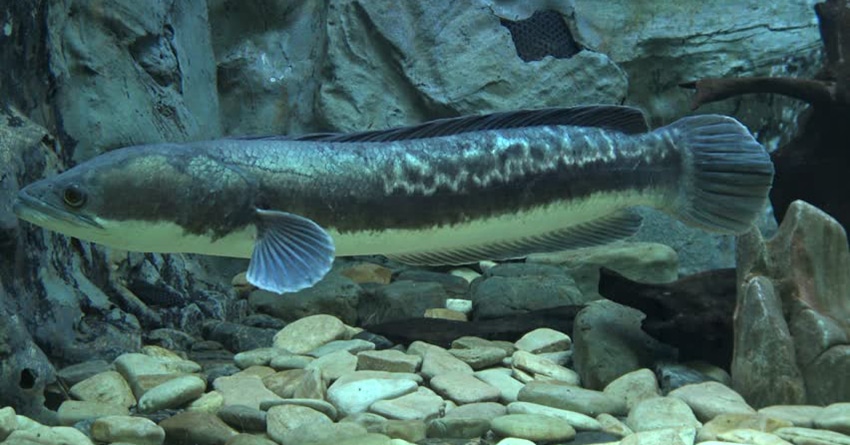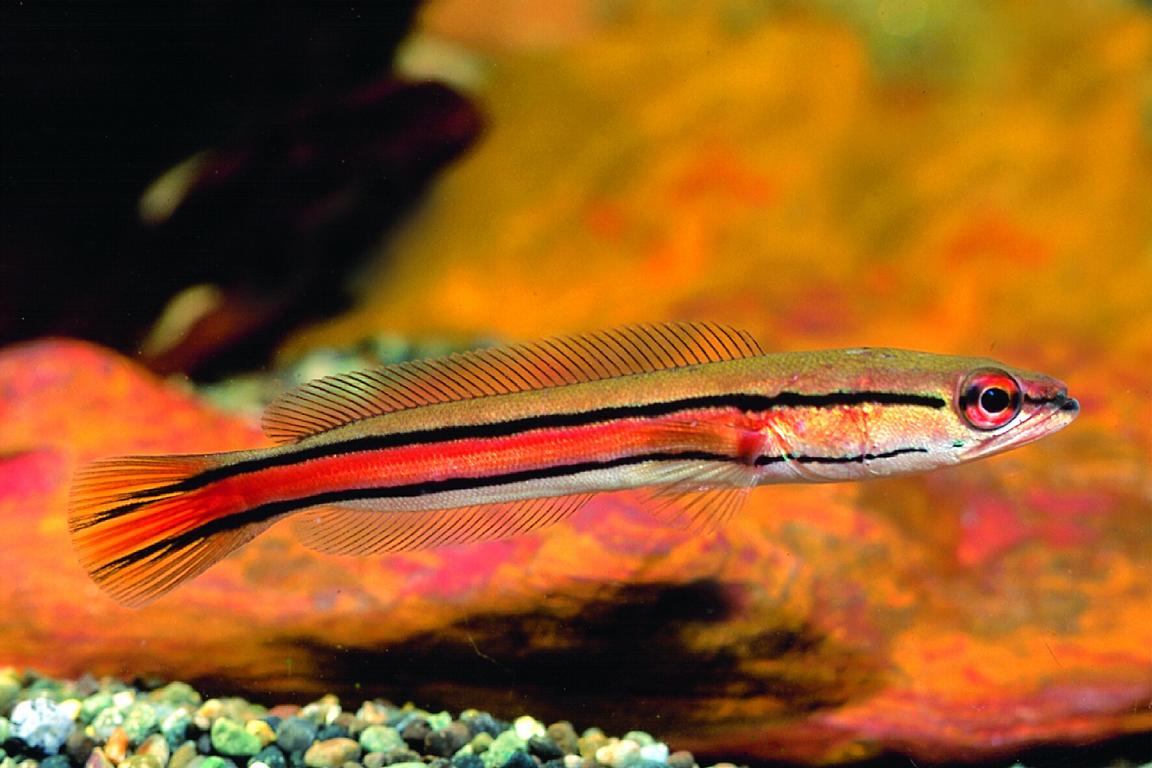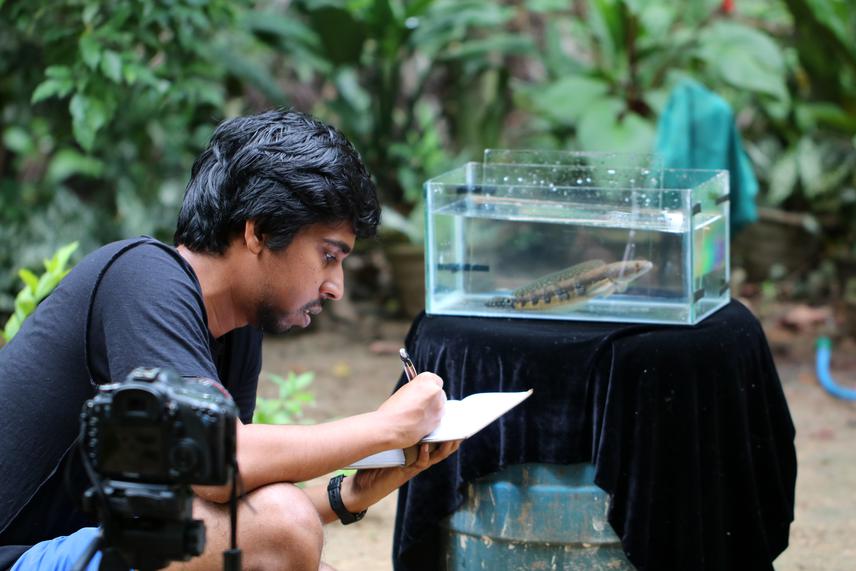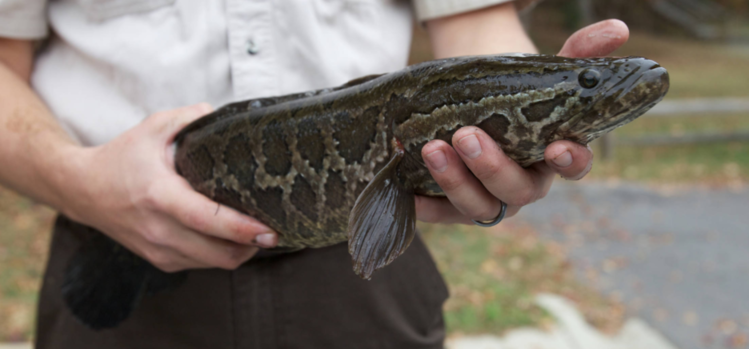The giant snakehead (Channa micropeltes) represents one of the most concerning biological invasions currently threatening Sri Lanka’s freshwater ecosystems. This formidable predatory fish, native to the river systems of Southeast Asia, has established breeding populations in Sri Lankan waters, particularly in the Deduru Oya reservoir, creating unprecedented challenges for native biodiversity and local fishing communities. Understanding the full scope of this invasion requires examining not only the species’ remarkable biological characteristics but also the economic factors that facilitated its introduction and the far-reaching consequences of its establishment.
Critical Species Distinction: Avoiding Confusion with Native Channa ara
Before delving into the invasive threat, it is essential to clarify a common source of confusion that has complicated public understanding and response efforts. Sri Lanka is home to a native species commonly referred to as the “giant snakehead,” scientifically known as Channa ara. This endemic species has coevolved with Sri Lanka’s freshwater ecosystems over millennia and poses no invasive threat to native biodiversity. The invasive species under discussion, Channa micropeltes, is an entirely different organism originating from Southeast Asian river basins, particularly the Mekong and Chao Phraya systems. The distinction between these species is crucial for conservation efforts, as management strategies must target the foreign invader while protecting the native giant snakehead that forms an integral part of Sri Lanka’s aquatic heritage.

Biological Profile
The invasive giant snakehead possesses a combination of biological traits that make it exceptionally suited for colonizing new environments and disrupting existing ecological relationships. Adult specimens can reach impressive sizes, with lengths exceeding one meter and weights approaching 20 kilograms, making them significantly larger and more imposing than most native Sri Lankan freshwater fish species. Their torpedo-shaped bodies are perfectly designed for explosive bursts of speed, while their massive jaws are equipped with rows of sharp, backward-curving teeth that ensure captured prey cannot escape.
Perhaps most remarkably, giant snakeheads are obligate air-breathers, possessing a primitive lung structure that allows them to extract oxygen directly from the atmosphere. This adaptation enables them to survive in oxygen-depleted waters where other fish species would perish, and even to travel short distances across land between water bodies. During periods of drought or habitat disturbance, while native fish populations suffer dramatic declines, giant snakeheads can burrow into mud and enter a state of dormancy, emerging when conditions improve to exploit the ecological vacuum left by their competitors.
The reproductive biology of Channa micropeltes further enhances its invasive potential. Females can produce between 2,000 and 10,000 eggs per breeding season, with some studies suggesting annual egg production can reach up to 100,000 under optimal conditions. Both parents exhibit fierce protective behavior toward their offspring, aggressively defending nesting areas and accompanying juveniles for weeks after hatching, dramatically increasing survival rates compared to most fish species that abandon their eggs immediately after spawning. This combination of high reproductive output and intensive parental care creates ideal conditions for rapid population establishment and growth.

Economic Factors in Introduction
The pathway by which giant snakeheads entered Sri Lankan waters illustrates how seemingly unrelated economic factors can facilitate biological invasions. The primary route of introduction was the international aquarium trade, where juvenile giant snakeheads became popular among “monster fish” enthusiasts attracted to their striking appearance and rapid growth rates. During the initial period of introduction, which occurred primarily between 2015 and 2020, these fish were sold in Sri Lankan pet shops for remarkably low prices of approximately 100 to 150 Sri Lankan rupees per specimen.
The affordability of these imports was significantly influenced by exchange rate dynamics that made foreign goods unusually accessible to Sri Lankan consumers. In 2015, the US dollar traded at approximately 135 Sri Lankan rupees, making imported aquarium fish relatively inexpensive for both retailers and hobbyists.

Ecological Impact and Ecosystem Disruption
The establishment of giant snakeheads in Sri Lankan waters has triggered cascading effects throughout freshwater food webs, fundamentally altering ecological relationships that evolved over thousands of years. As apex predators with few natural enemies in their new environment, these fish occupy the highest trophic levels, preying upon virtually all other aquatic organisms including native fish, amphibians, crustaceans, and even small birds that venture near the water surface. Their hunting strategy combines ambush tactics with explosive speed, making them devastatingly effective predators capable of consuming prey up to one-third of their own body length.
The competitive pressure exerted by giant snakeheads extends beyond direct predation to include competition for food resources, breeding territories, and optimal habitat zones. Native snakehead species, including the endemic Channa ara that previously dominated Sri Lankan freshwater systems, find themselves outcompeted by their larger, more aggressive relatives. Commercial fish species such as tilapia and the native loola (Channa striata) have experienced dramatic population declines in areas where giant snakeheads have established breeding populations.
Biodiversity impacts are particularly concerning given Sri Lanka’s status as a global biodiversity hotspot with over 50 endemic freshwater fish species. Many of these species have restricted ranges and specialized habitat requirements that make them especially vulnerable to predation and competition from invasive species. The loss of endemic species represents an irreversible reduction in global biodiversity, as these organisms exist nowhere else on Earth and cannot be replaced once extinct.

Socioeconomic Consequences for Fishing Communities
The ecological disruption caused by giant snakeheads has translated directly into economic hardship for communities that depend on freshwater fisheries for their livelihoods. Fishermen operating in the Deduru Oya reservoir report catch reductions of up to 50% since giant snakeheads became established in the system. These declines represent not merely statistical abstractions but real reductions in income and food security for families that have relied on consistent fish harvests for generations.
The species composition of catches has shifted dramatically, with commercially valuable native species becoming increasingly rare while giant snakeheads themselves comprise a growing proportion of the total biomass. While some effort has been made to market giant snakeheads as food fish, consumer acceptance remains limited, and the disruption to traditional fishing patterns continues to undermine economic stability in affected communities. The transformation of familiar fishing grounds into habitats dominated by an unfamiliar and potentially dangerous predator has also created safety concerns, as adult giant snakeheads are known to aggressively defend their territories and can inflict serious injuries on humans who venture too close to nesting areas.
Current Management Challenges and Regulatory Gaps
Sri Lanka’s response to the giant snakehead invasion has been hampered by a combination of regulatory weaknesses, limited institutional capacity, and insufficient public awareness about the risks posed by invasive species. Despite the existence of a National Policy on Invasive Alien Species established in 2016, implementation has been inconsistent and enforcement mechanisms remain inadequate. The aquarium trade continues to operate with minimal oversight, and there are few restrictions on the importation or sale of potentially invasive fish species.
Detection and rapid response capabilities are particularly lacking, with no systematic monitoring program in place to identify new invasions before they become established. The giant snakehead population in Deduru Oya was discovered only after it had already achieved breeding status and begun to impact native fish communities. This reactive approach to invasive species management virtually guarantees that future invasions will follow similar patterns of establishment and spread before control measures can be implemented.
Institutional coordination among relevant government agencies, including the National Aquatic Resources Research and Development Agency (NARA), the National Aquaculture Development Authority (NAQDA), and various environmental ministries, remains fragmented and inefficient. Without clear lines of authority and coordinated action plans, responses to invasive species threats tend to be slow, inadequately funded, and ultimately ineffective.
Scientific Research and Monitoring Needs
Effective management of the giant snakehead invasion requires a substantial expansion of scientific research and monitoring capabilities. Current knowledge about the species’ distribution, population dynamics, and ecological impacts in Sri Lankan waters remains limited, hampering efforts to develop targeted control strategies. Systematic surveys are needed to map the full extent of giant snakehead populations and identify priority areas for control efforts before the species spreads to additional river systems.
Research into the species’ reproductive biology under Sri Lankan conditions could inform timing and methods for population control efforts. Understanding seasonal breeding patterns, preferred spawning habitats, and juvenile survival rates would enable managers to target interventions when they are most likely to be effective. Similarly, studies of feeding ecology and prey preferences could help predict which native species are at greatest risk and guide conservation prioritization decisions.
Long-term monitoring programs are essential for tracking the effectiveness of control measures and detecting new invasion fronts before they become established. Such programs require significant investment in training, equipment, and personnel, but the costs of prevention and early intervention are invariably lower than the expenses associated with managing well-established invasive populations.

International Lessons and Management Strategies
The global experience with snakehead invasions provides valuable insights for developing management strategies in Sri Lanka. In the United States, the establishment of northern snakeheads (Channa argus) in the Chesapeake Bay watershed prompted comprehensive response efforts including possession bans, targeted removal programs, and extensive public education campaigns. While complete eradication has proven impossible, these measures have slowed the species’ spread and minimized ecological impacts in some areas.

Malaysia and Thailand, countries where giant snakeheads have also become established outside their native range, have adopted different approaches emphasizing commercial harvesting as a population control mechanism. Promoting giant snakeheads as a food fish can create economic incentives for intensive fishing pressure while simultaneously reducing population sizes. However, this approach requires careful management to prevent the development of aquaculture operations that could serve as additional sources of escapes into wild populations.
The most successful invasive species management programs combine multiple approaches including prevention, early detection and rapid response, population control, habitat restoration, and public education. No single intervention is sufficient to address the complex challenges posed by established invasive populations, and effective programs require sustained commitment and adequate funding over extended periods.
Future Projections and Risk Assessment
Without significant intervention, the giant snakehead invasion in Sri Lanka is likely to expand beyond its current range in the Deduru Oya system. The species’ remarkable dispersal abilities, including its capacity to survive brief periods out of water and move between water bodies, suggest that natural barriers may not prevent spread to additional river systems. Flooding events, which are becoming more frequent and severe due to climate change, could accelerate dispersal by temporarily connecting previously isolated water bodies.
The ecological and economic impacts observed in Deduru Oya provide a preview of what may occur in other freshwater systems if the invasion continues unchecked. Sri Lanka’s network of reservoirs, irrigation channels, and natural waterways creates numerous opportunities for range expansion, and each new colonization event establishes additional source populations for further spread.
Climate change may exacerbate the invasion threat by creating environmental conditions that favor giant snakeheads over native species. Rising temperatures, altered precipitation patterns, and increased frequency of extreme weather events could stress native fish communities while providing opportunities for invasive species to exploit disturbed habitats. The combination of biological invasion and climate change represents a particularly severe threat to Sri Lanka’s freshwater biodiversity.
Recommendations for Comprehensive Management
Addressing the giant snakehead invasion requires immediate implementation of a comprehensive management strategy incorporating prevention, control, and restoration components. Regulatory reforms should prioritize strengthening oversight of the aquarium trade, implementing mandatory risk assessments for imported species, and establishing clear penalties for unauthorized releases of non-native organisms. Public education campaigns must raise awareness about the ecological and economic consequences of invasive species while providing clear guidance on responsible pet ownership and disposal.
Active population control efforts should focus initially on preventing expansion beyond the Deduru Oya system while simultaneously working to reduce established populations through targeted removal, commercial harvesting, and habitat modification. Early detection programs must be established for other high-risk water bodies, with rapid response protocols ready for immediate implementation when new invasions are discovered.
Long-term success will require substantial investment in scientific research, monitoring capabilities, and institutional capacity building. International cooperation and knowledge sharing can accelerate the development of effective management approaches while reducing the costs and risks associated with experimental strategies.
The giant snakehead invasion in Sri Lanka serves as a stark reminder of how seemingly minor decisions about pet ownership and trade regulation can have profound consequences for ecological integrity and human welfare. The economic factors that facilitated this invasion – particularly the period of favorable exchange rates that made exotic pets affordable – illustrate how environmental and economic policies are inextricably linked. Effective management of this crisis will require recognition of these connections and development of integrated approaches that address both the immediate biological threat and the underlying economic and social factors that enabled it to occur.
References
1. https://aquadiction.world/species-spotlight/giant-snakehead/
2. https://fishbase.se/summary/Channa-ara
3. https://en.wikipedia.org/wiki/Ceylon_snakehead
4. https://news.mongabay.com/2025/06/predatory-snakehead-fish-poses-invasive-threat-after-sighting-in-sri-lanka-reservoir/
5. https://www.monsterfishkeepers.com/forums/threads/breeding-channa-micropeltes-true.119664/
6. https://animalia.bio/northern-snakehead
7. https://nyis.info/species/northern-snakehead/
8. https://li01.tci-thaijo.org/index.php/JFE/article/view/257627
9. https://www.sundaytimes.lk/230917/news/aquariums-doing-underground-trade-in-native-freshwater-s
pecies-533105.html
10. http://www.lankabuysell.com/Animals/Snakehead+Fish+For+Sale/at5f72
11. https://www.exchange-rates.org/exchange-rate-history/usd-lkr-2025
12. https://www.cbsl.gov.lk/en/rates-and-indicators/exchange-rates/usd-lkr-Indicative-rate-chart
13. https://potomac.org/blog/2020/1/8/snakehead-study
14. http://island.lk/giant-snakehead-threatens-deduru-oya-fish/
15. http://env.gov.lk/web/images/downloads/policies/IAS_Policy_English-1.pdf
16. https://pmc.ncbi.nlm.nih.gov/articles/PMC6951289/
17. https://www.usgs.gov/faqs/what-are-potential-effects-snakeheads-our-waters
18. https://www.thecooldown.com/outdoors/giant-snakehead-fish-sri-lanka-reservoir-nutrient-control/
19. https://www.dailymirror.lk/news-features/Would-Deduru-Oya-become-home-to-the-most-predacious-s
nakehead-fish/131-315003
20. https://en.wikipedia.org/wiki/Channa_micropeltes







